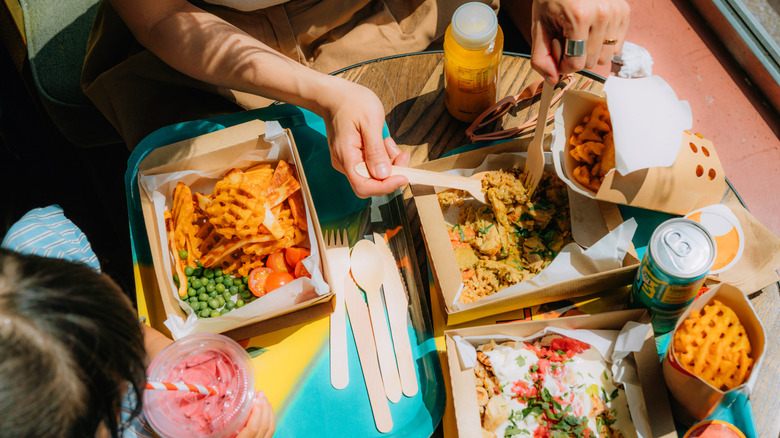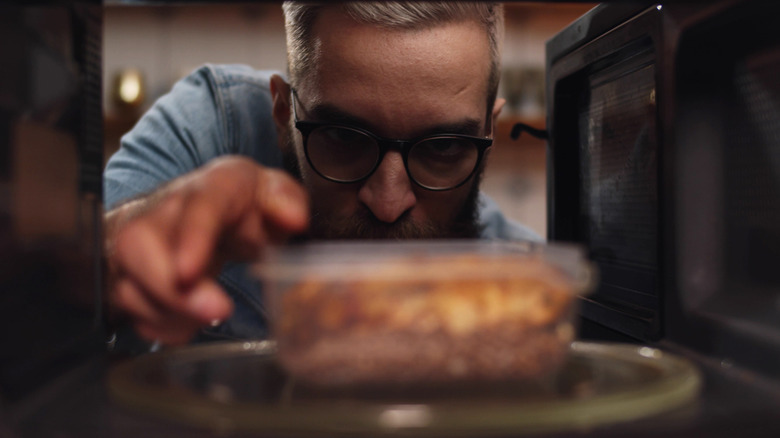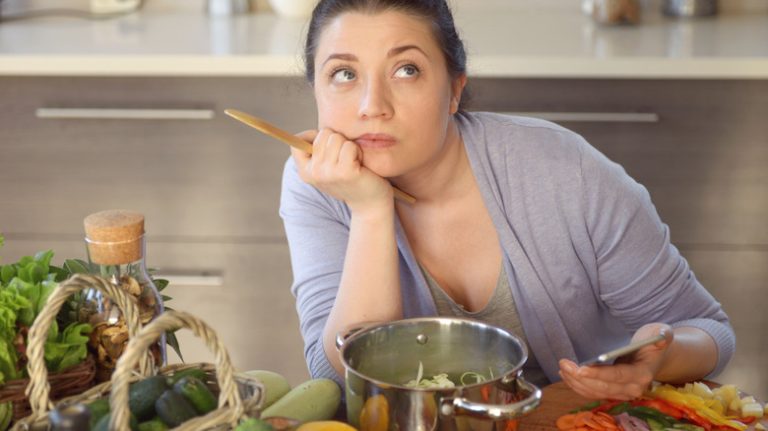
While takeout is a convenient and tasty choice when cooking feels like a chore, it’s not always the safest bet. You can’t always be sure about the hygiene in a restaurant’s kitchen. Even the cleanest kitchens might not be completely free of curious critters. Additionally, there might be concerns about how food is handled during preparation. Moreover, from the time your meal is prepared to when it’s delivered, issues related to hygiene could arise. If your meal arrives cold when it should be hot, it might not be safe to consume.
“As food enters the temperature zone at or near room temperature, the microorganisms that have contaminated the food will proliferate rapidly,” food scientist Bryan Quoc Le explained to HuffPost. He added that the rate at which bacteria proliferates depends on factors like salt and sugar content, moisture, and acidity levels. “If the number of pathogens in the food reaches a critical number, they can cause foodborne illness in the consumer,” said Le.
However, this doesn’t mean you should immediately delete all your food delivery apps and start cooking every meal. Being aware of the potential for food poisoning from delivery or takeout can help you take the necessary precautions to avoid it.
Don’t Give Your Takeout Order Time to Grow Bacteria

Once your delivery arrives, eat it right away. If you’re planning a Chinese food and movie night, decide on the movie beforehand and have it ready to go. Don’t leave your delivery sitting on the counter while you prepare for the evening.
If something comes up and you can’t immediately enjoy your food, refrigerate it until you can. According to the U.S Department of Agriculture, food left between 40 and 140 degrees Fahrenheit—known as the “danger zone”—can see bacteria double in just 20 minutes. Bacteria like Bacillus cereus, Staphylococcus aureus, E. coli, Clostridium perfringens, and Salmonella can quickly multiply in this temperature range. Food should not be left unrefrigerated for more than an hour, and in hot weather, even an hour can be too long.
Though a stomach bug may not seem severe, it can be quite dangerous. The U.S. Centers for Disease Control and Prevention estimates that out of the 48 million people who suffer from food poisoning annually, 128,000 require hospitalization, and 3,000 do not survive.
How to Stay Safe and Prevent Food Poisoning

Besides eating your delivery as soon as possible, trust your senses. If your usual order from a familiar place smells or tastes off, don’t eat it. It’s better to waste food than to risk getting sick. Stick to ordering from reputable establishments, preferably ones you’ve visited before.
Be wise when placing a delivery order. If it’s scorching hot outside, avoid ordering sushi or dairy products that spoil quickly. Regardless of the season, ensure that meats, especially poultry and fish, are properly cooked, as advised by the UConn College of Agriculture, Health and Natural Resources.
If you need to reheat your takeout, do so at 165 degrees Fahrenheit to kill any bacteria. Avoid microwaving food in plastic to prevent chemical exposure. For leftovers, properly store them in airtight containers and refrigerate within two hours of receiving your order. The ideal storage temperature is 40 degrees Fahrenheit or below, according to the U.S Department of Agriculture.
While no method is foolproof when it comes to takeout or home-cooked meals, food can sometimes become contaminated despite our best efforts. If you feel unwell after eating, don’t hesitate to contact your doctor.




